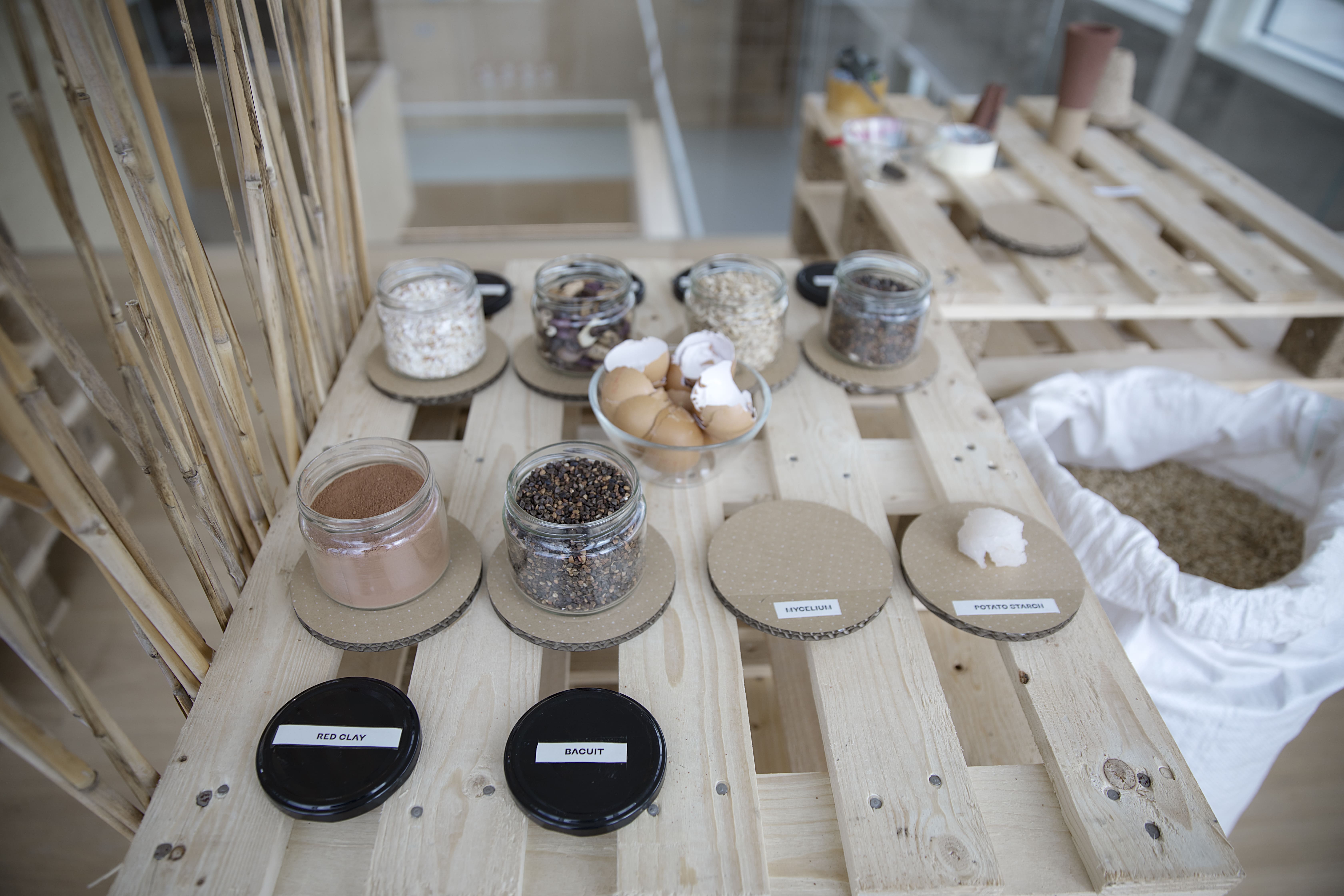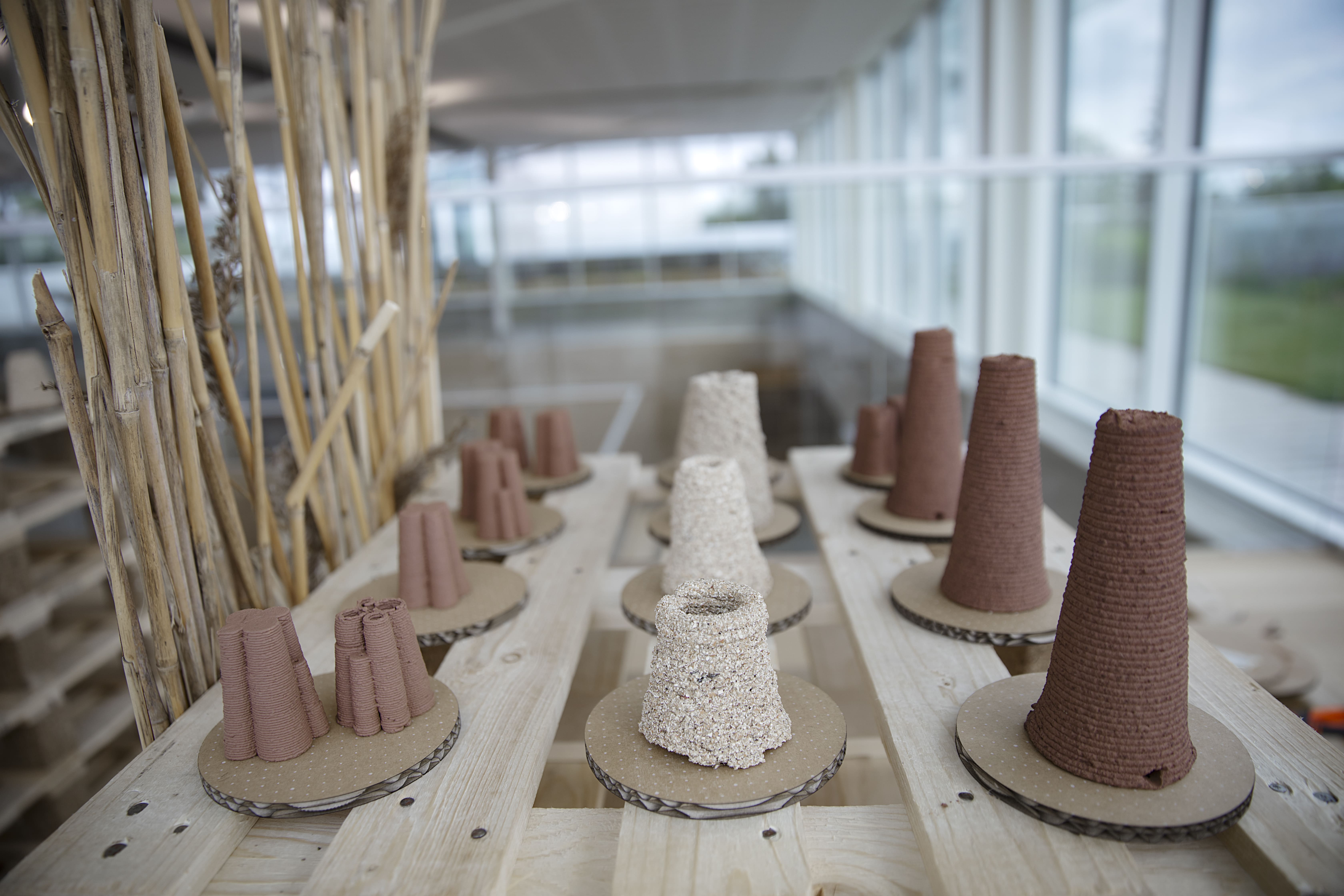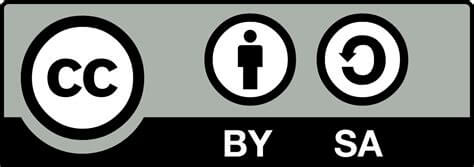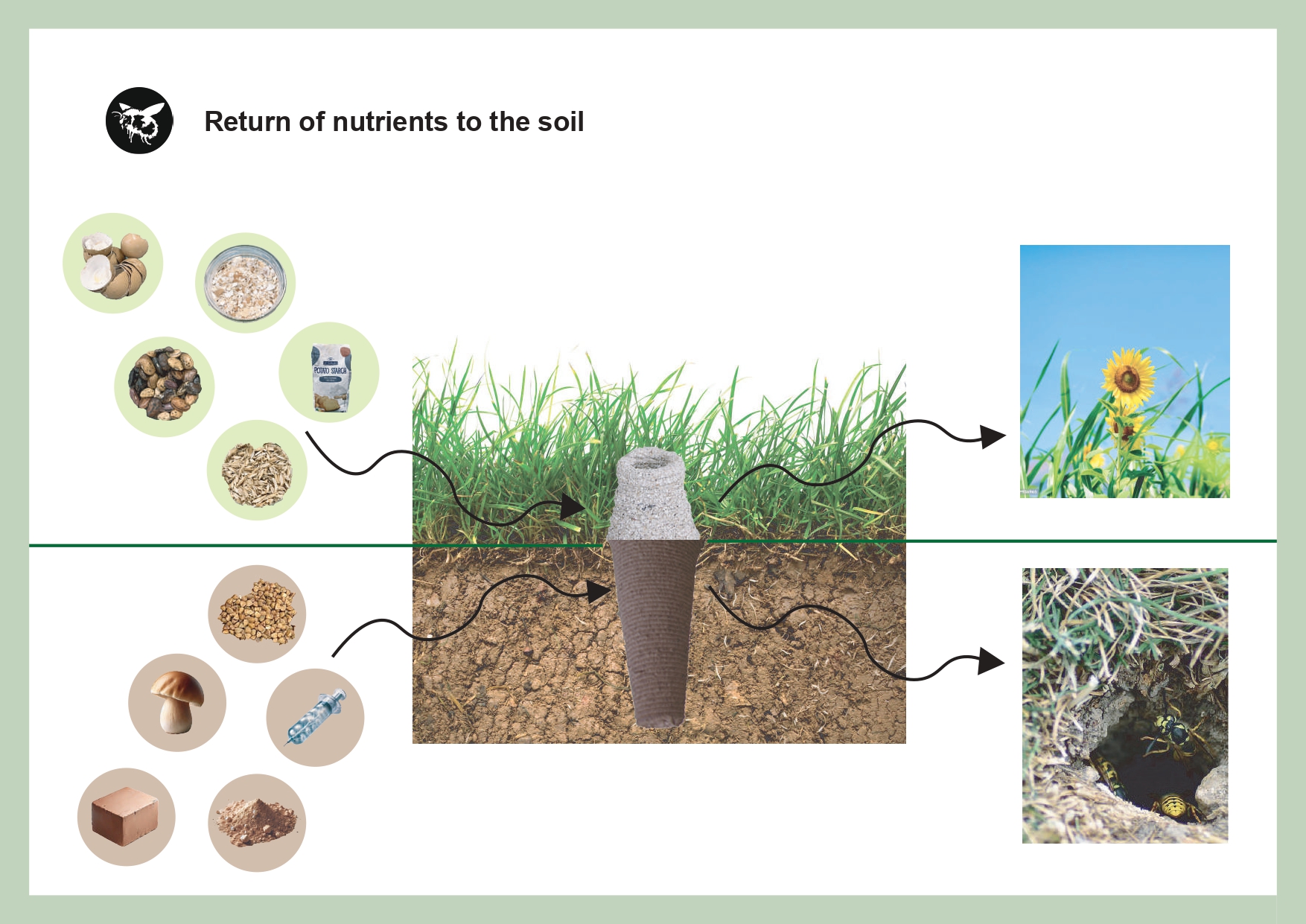
BiodiverCities
The toolkit

In the BiodiverCities II project, not only is manual labor involved, but technology is also incorporated into the process. To produce a ground unit, 3D printing is used. The Delta Wasp 2040 printer was chosen as the primary tool for the BiodiverCities II project. You can see the precise printer parameters and process instructions required for printing the bee 'hotel' in the illustration below and in the expanded instruction.
The toolkit
Instructions for making the toolkit can be found here:
InstructionsThe toolkit is made open-source under CC-BY-SA 4.0 license. You can easily download all the working files from here:
FilesThe materials for the BiodiverCities II 3D-printable insect hotel have been chosen to decompose naturally within one season, thereby enriching the soil. The final structure consists of two conical parts: one that is closed to create the nest and one that is open to allow the insects to enter, when the object itself is buried in the ground halfway. The lower part, made of red clay, mycelium and buckwheat hulls, encourages the growth of the fungal network. The upper part is made of eggshells, starch and a mixture of seeds from wild flowers native to Lithuania.
 Organic material samples. Photo Svetlana Batura
Organic material samples. Photo Svetlana Batura
Thanks to 3D printing technology, designs can be easily reproduced and adapted to local conditions using sustainable, easily degradable materials. The project team invites design studios and maker spaces around the world to adapt the presented recipes to specific local ecosystems, and contribute to the wider implementation of eco-innovations and social awareness.
 Differences betwen habitat parts. Photo Svetlana Batura
Differences betwen habitat parts. Photo Svetlana Batura
Team:
- Justė Motuzaitė
- Kontryna Lenkauskaitė
- Lorenzo Piazzi
- Modestas Stankaitis
- Rūta Valušytė
- Niccolò Lelli
- Hari Prasanna Manimaran
- Giuseppe Donvito
- Justina Klėjūtė
Contacts: info@designfriends.org
Developed and distributed under CC BY-SA license










